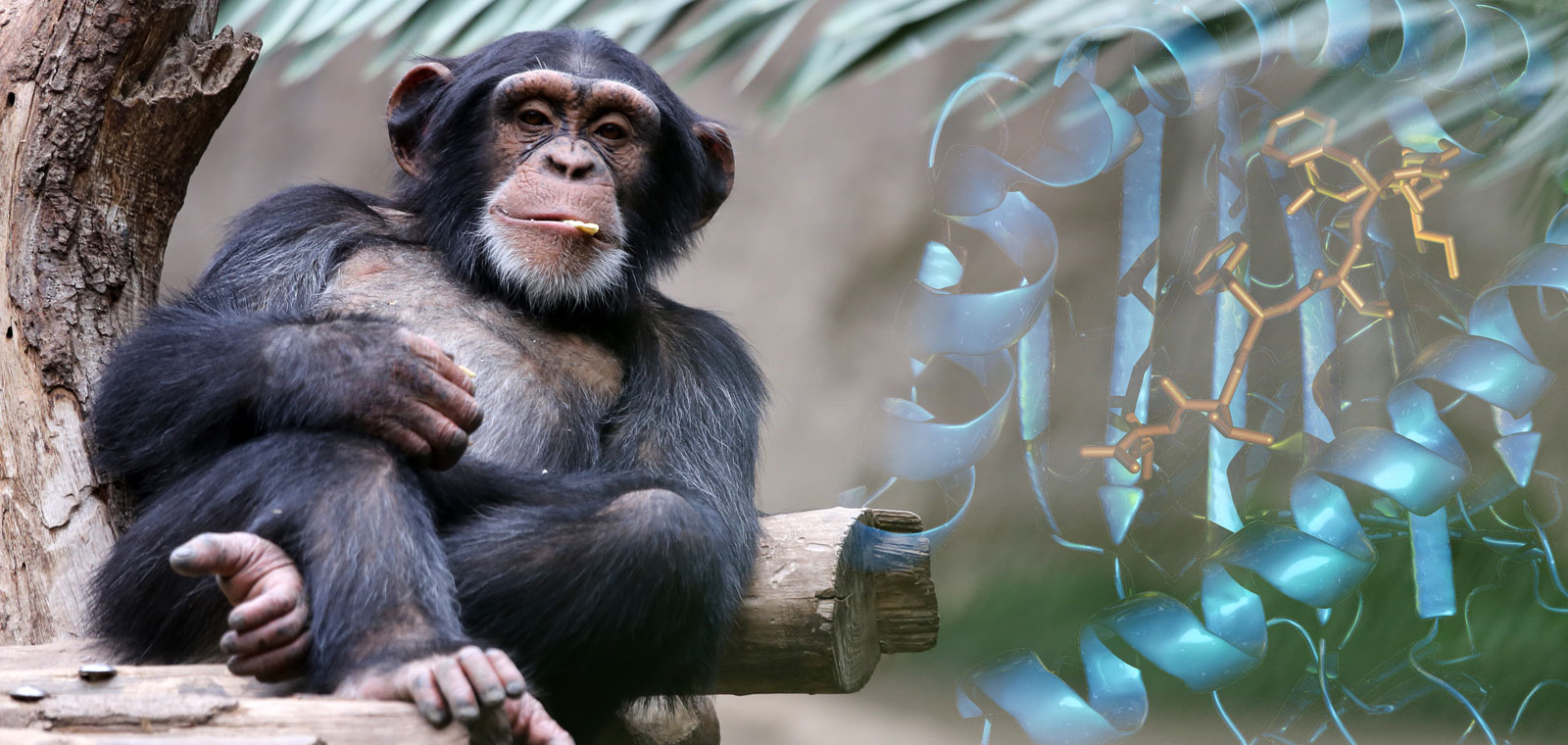
Animal-free research techniques shed a light on retroviral infections
Since 2002, the use of chimpanzees in animal research is no longer allowed. However, we are still learning a lot from these apes in AIDS research. Now with the use of animal-free techniques, which we can apply partly because of our bio-bank; Europe’s largest biobank of non-human primate tissue. This is not only important in the fight against AIDS, but also for the health of animals living in the wild.
Recently, this way of working has provided new insights allowing us to learn more about the resistance to the virus that causes AIDS: HIV-1. This virus originates from chimpanzees, who have also played an important role in AIDS research. Chimpanzees are still continuing to play an important role, but now in different ways.
On a silver platter
Most of the chimps that were infected with HIV-1 last century, were able to control the infection. Consequently, the progress from HIV to AIDS was rarely observed in these apes. A successful immune response suppressed further spread of this virus and other retroviruses. In particular, so-called “T-cells” play a crucial role in this.
But, a T-cell can only clear up an infected cell when a vital piece of the virus, an antigen, is handed on a silver platter. This is the task of specific molecules on the surface of antigen-presenting cells.
A successful immune response
The major histocompatibility complex (MHC) codes for these molecules on antigen-presenting cells. On chromosome 6 lies, not one, but a whole collection of HMC genes. The genes have a high degree of variation within the population (polymorphism) and chemical composition of MHC molecules can differ significantly between individuals within that population. Each MHC molecule is very selective in the part of the virus it will, or will not, select for antigen presentation. This means that a successful immune response also depends on the right variants of genes. In HIV-infected people, resistance to developing AIDS is associated with certain sets of MHC genes.
Genes alert immune system to HIV
Scientists of BPRC have previously shown that humans and chimpanzees who have a natural resistance to AIDS share similar MHC molecules that are capable of binding the same antigens. Our recent research has shown that chimpanzees and bonobos are able to use several genes from their own MHC pool to alert the immune system to a retroviral infection. In humans, certain variants of those genes are not clustered on the same chromosome, but are more spread among the population.
Also important for the conservation of endangered species
Research using computer models is making it increasingly clear that, during evolution, chimpanzees and bonobos were enriched with MHC genes that are capable of recognizing HIV-1, or other retroviruses. This, and more, acquired knowledge about the natural resistance to AIDS is not only an important weapon in the fight against AIDS but also crucial for the conservation of endangered animal species such as the chimpanzees and the bonobos.

